With only a little over a week in Morocco and my parents along for the ride, we had decided to simplify the Moroccan adventure to 3 different locations and perspectives; a triangle of experiences so to speak. Casablanca of the movie and beaches fame, mostly because it was easy access; Marrakech for markets, desert and mountains and a small seaside artist town Essaouira, on the Atlantic. It meant not a lot of time wasted in transit which gave us more opportunity to settle in and soak up the respective flavours on offer.
After our false start with Ramadan the day before, we arrived to meet mom and dad at their hotel early afternoon, too firstly catch up but also brief them in on the planned adventure. It was wonderful to see them in person after almost 2 years, surreal as the location of this encounter was in the context of an Australian parental reunion. Rarely does time or distance change much with them, a major blessing when I am always overseas and never in regular proximity. I was still impressed that they had agreed to meet in Morocco during Ramadan and there was some relief that the setting, foreign circumstances or time had not changed the ease and comfortable nature of our relationship. If anything I was the one that was different here – thinner, healthier, less hair and more relaxed or at least that’s the feedback loop.
Later as we walked around the old medina and soaked up the markets and new environment, I had the joy of seeing things through mum and dad’s eyes. Sometimes as a traveller you do get jaded and take things for granted. The day to day of negotiating and buying food at the markets suddenly becomes an enlivened experience through the contrasting perspective of someone doing it for the first time. Country after country, back to back like this sometimes the process becomes the same and you take it for granted.
Watching someone who has never had to negotiate for anything in their life, become aware of the entire process for the first time is fascinating. The simplest items that seem cheap at first glance, escalate downwards in price as you walk away, sometimes ending up at 10% of the original asking price. Initially the prospect of entering this foray to buy something is daunting. I had to press Megumi for months at the start of our trip in South East Asia to engage in the game. She simply wasn’t used to it at all and hated the protracted engagement of it, she wanted out of a transaction as quickly as possible and was happy to pay more to do it. But the negotiation is a process in itself, it puts a face on the deal – both parties get to know each other a little better over the course of a transaction and it feels more real, you have to give more of yourself to own something. We have become so de-sensitized in the west to these things through consumerism. You can spend days buying something and never really talk or look at someone seriously at home. In SE Asia, India, Africa and the Middle East the art of bargaining brings the whole process alive more and there is a greater personal attachment to the purchase. None of which of course is obvious at first and my parents’ initial horror at the difficulty of establishing a real price was priceless to watch.
After a day of casual orientation and catching up in Casablanca, we caught a train to Marrakech, an easy 5 hour journey through a countryside that changed gradually from coastal agriculture to more arid inland and ultimately mountain desert. Again mom and dad refreshed our experience with their fascination with the countryside and the agricultural processes on display. This is what they do and love I realize, as the kilometres rolled ceaselessly by they let forth an uninterrupted commentary and speculation on the types of agriculture and plant-life on display. New things were revealed to me, that normally we would look at but not really see – hay bales stacked in barn like shapes with mud coverings on the roof to protect from the elements; strange irrigation systems, exotic crops and endemic plants. Suddenly I felt like a student again – they were going to give as good as they good on this trip, I realized with satisfaction.
Marrakech is famously a crazy place and from the station, we took advantage of an open coffee shop catering to hungry tourists (you eat where you see an opportunity as a foreigner in Ramadan), before plunging in and haggling a taxi to the old medina. A walled fort that represents the old Marrakech, the medina is a large extended marketplace and surrounding honeycomb labyrinth of streets and homes seemingly unchanged in centuries. Outside the walls, the newer Marrakech sprawls a vibrant bright apricot montage of stone buildings, the same uniform colour in all directions. All the colours seem to contrast themselves beautifully against the green of the palm trees, the white walls of the old fort and the orange browns of the town and Medina itself and the distant brown of the Atlas Mountains. Our taxi came to a stop at the end of a tiny, cobble stoned street lost deep in the Medina and all organization also came to an end. Ahead of us was the labyrinth of little laneways, somewhere in the vicinity of a traditional Moroccan home, called a Riad (Dar Tayib) where we had made a booking to stay a few nights. As we pulled our bags from the taxi, a skinny old man with a pull cart (think two wheels on a metal frame) started loading our bags, before we could properly agree a price (a big no-no) and suddenly we were on foot and chasing him through the tiny winding streets, dodging a cacophony of people, dogs, motorbikes and everything else – trying to keep him in sight as he shot left and right into little hidden cobblestone back alleys dodging kids at play to our destination.
Arriving surprisingly safely at our Riad, we were greeted by the owner, a lovely Moroccan lady, (married to a Frenchmen) and ushered into a little haven of peace and serenity. The Riad was a 3 storey house and quite typical in design. Built around a central courtyard full of tall palms, plants and a water fountain; on the ground floor were cushioned lounge spaces, a dinning room and a kitchen, the second and 3rd floor contained beautiful bedrooms with stone ensuite bathrooms and the rooftop provided another covered lounge and a sundeck overlooking a closely packed, endless 3 story high jumble in all directions, Mosque turrets littering the skyline, the only thing to really break up the horizon. You can easily imagine jumping across these buildings in an action movie chase scene reminiscent of the ‘Bourne Supremacy?’
Later, under the careful guidance of a young maid at the hotel, on her way home to her family for the first meal of Ramadan, we were shown how to navigate to the main marketplace and square. A 15 minute journey through a winding network of seemingly all right turns down ever increasing corridors of activity; stalls and markets becoming more tourist orientated the closer we came, until ultimately feeding into the grand square itself. The great square of Marrakech is one of those amazing places, endlessly photographed and in films. Surrounded by Mosques on 2 sides and 2 story restaurants, the square is the gateway to the broader covered markets and supports an ever changing assortment of wildlife. Snake charmers with Cobra’s and other snakes sit around in baskets waiting for tourists to pay them a few bucks to do their tricks. Elsewhere men with monkeys on chains wait to do the same, in non-Ramadan times the place buzzes with jugglers as well, but the combination of heat and no food or liquid must be tough on athletes. At night, 50 or so food stalls set-up with tables and chairs and compete to serve all sorts of Moroccan delicacies – including snails.
We ducked the heat and sat on the second storey to take this all in, before plunging into the markets themselves. Marrakech used to be a border town and hub for the tribes of Africa and the Sahara to bring their wares. These days it is more considerably geared towards tourist staples and the operators are vicious salesmen – there are centuries of genetic, Darwinian selection mechanisms at work here on how to make a buck. The market features endless stores selling classic variations of carpets, ornately designed plates, tangines, leather and metalwork, clothing and the more exotic (ie strange herbal cures, owls and chameleons or lion skins). Intertwined with mosques, museums and other attractions, the market takes days to explore fully and even more patience to dodge the touts and friendly scams let alone negotiate a sale effectively. We had 3 days here, enough to get to know our way around reasonably well and get familiar with more realistic prices and some of the standard scams. We are able to hand hold mum through the buying process for an authentic tangine, some baskets and some other novelties to try and get her at least a better deal – no one wins here really though and as good as the markets are, the bargaining process totally wore her out I think.
A couple of days in we hired an English speaking driver (and his old blue Mercedes) for the day to take us up into the Atlas mountains and see some of the ancient Kasbahs (forts) and towns of the high plains and Saharan wilderness. Leaving early dad comfortably ensconced in the front seat and rattling off, a whole host of repressed questions about the agriculture and farming practices of the region, we passed through huge tracts of cactus bearing fruits covering the sides of the road and starting rising up into the bare mountains. At this point the Mercedes starting to struggle and the driver pulled over to show us a hole in the radiator. Apparently he needed our fare plus another in order to be able to afford the repair. Somehow he spent the next 10 hours climbing through the mountains, stopping regularly to fight the steam, cool down the engine and replace water without ever breaking his fast and taking a drink. The spiritual strength that the Muslim practice and its key rituals such as Ramadan develop is something to envy.
We weren’t to unnerved at the pace though, stopping regularly and going slowly gave us more time to soak up the dramatic mountain scenery and hundreds of stunning, mud villages set amongst oases along the riverbed floor as they slowly succumbed to the encroaching Saharan desert. We made a couple of key stops to check out the famous Kasbah’s, huge mud like forts where the Sultans used to live that oversaw the region. Decrepit and ruined on the outside, one we saw had stunning mosaic tile work inside the harem (naturally). A guide from the village, a Saharan Bedouin took us around for free which as it turned out meant we in turn needed to check out his carpet shop. They had some nice pieces, but after Iran I was pretty full up on the old carpets and the folks didn’t seem to keen on the potential for bargaining involved. We continued on down the valley, following the small winding stream and green oasis at the bottom as the mountains became more arid and opened into desert, the whole time. Finally we arrived at Ait Bennadou – the famous mud fortress that has appeared in dozens of films from “Gladiator” to “Jewell of the Nile”. Here we had the chance to explore the entire village, tourist trap as it is, it was a stunning location.
When we eventually made it back to Marrakech, (our driver finally got a drink as the sun set) we had another day for some last minute shopping and exploration of the inner medina, before making the bus trip over to the coastal city of Essaouria a 3 or 4 hour journey. After the chaos of Marrakech, Essaouira was a very pleasant change of pace. Jimmy Hendrix used to escape here and the place has a very laid back, relaxed feel. Positioned by the sea, a fort built by the French out over a windy point; the walls of all the homes, fort and city are shaded white, but all the doors, windows and boats are painted a vivid bright blue. It provided a striking contrast and counterbalance to the apricot, dusty confrontation of Marrakech. We had booked a place at Riad Amana, a beautifully restored Riad with lovely bright, colourful rooms across several floors around a cental courtyard.
The town and characters here were intriguing which is always handy when there is little else to do other than wander around and sample the cuisine, sights and markets. The men here wear long hooded woollen jackets called Jurabas to keep out the wind, while women swaddle themselves in bright colours. The alleys are full of paintings, wood work sculptures and other bright local crafts. While primarily a fishing town, it is very popular with tourists taking in the sights from the fort walls and its cannons; braving the windy beach or just soaking up the seaside atmosphere and tranquility.
For our last stop, we caught a bus back to Casablanca. Compared to our other destinations this place did not really live up to its billing for mine, there was nothing remarkable here – its amazing what a movie will do to create a false expectation. We did get up to the beach / resort strip just to see how the other side partied though. Not quite the beautiful beaches we had imagined, more wall to wall gated resorts with private pools, restaurants and deckchairs. I get the impression that this is more where wealthy Moroccans come on holiday.
That aside, Morocco was a fantastic experience, it was exotic, unique and leaves a distinct echo in the memory. There are not many places we have been like that. Honestly, in many ways it could have been anywhere really – just being able to reconnect with family would supersede any backdrop for us. But the experience of being able to share our travel experience with mom and dad and in so doing, open up a destination to them that they would likely never have been able to manage on their own was also immensely satisfying.
![Moroccan Reunions With only a little over a week in Morocco and my parents along for the ride, we had decided to simplify the Moroccan adventure to […]](http://meltingplots.com/wp-content/uploads/2010/08/Boat1.jpg)

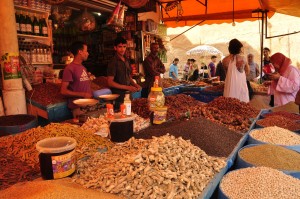
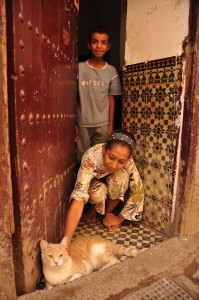

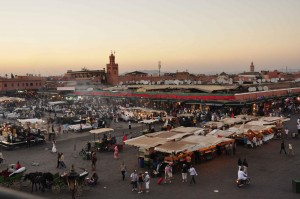
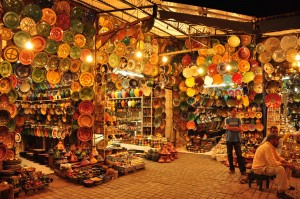
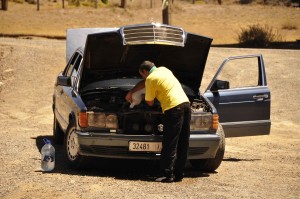
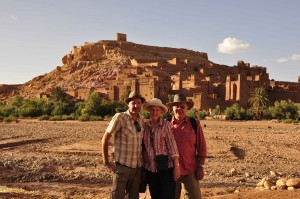

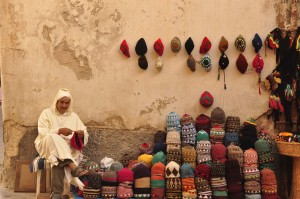
Leave a Reply